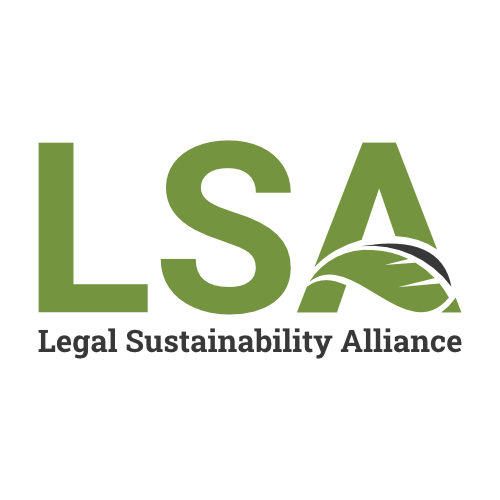
An interview with Eleanor Maciver, Partner and Sustainability Champion at IP firm Mewburn Ellis.
Why is being sustainable so important to Mewburn Ellis?
At Mewburn Ellis, we recognise that the goal of achieving net-zero by 2050 is both a complex and multifaceted endeavour. Not only do our own people and clients want it but, the planet needs it. We understand that contributing to achieving net-zero is the right thing to do and vital for the world we live in.
Sustainability has been on our agenda for many years with our first public five step climate action plan announced in 2022. Since then, our approach has rapidly developed and matured, and it holds a rightful place on our Board agenda.
What are the main features of your sustainability strategy?
As a service-based industry, we recognised that our carbon use would be a key area for us in understanding and improving the sustainability of our business. One of the first key steps we took was to measure and understand our energy use and carbon emissions. We first formally reported our carbon emissions in 2022 for the previous financial year. We now have two years of formal data, have greatly increased our understanding and matured our approach to carbon accounting implementing measures internally that will have the biggest impact. Thus far, as a result of these measures, we have been able to reduce our overall carbon emissions by 48%. In 2023, we used this understanding to produce our net-zero transition plan and had this verified by the Science Based Emissions Targets Initiative (SBTi).
Alongside this we have developed, and acted on, a more comprehensive climate action plan. Our overall strategy contains five key steps:
- We ask questions and are accountable
- We offset our carbon and are reducing it as much as possible and have set a near and long-term emissions-based reduction targets approved by SBTi
- We plant a tree for every new matter we open and have created a Mewburn Ellis Forest of over 50,000 trees
- We enable and support the sustainability conversation and take personal responsibility
- We support sustainability charities as part of our Forward Community Programme
Our approach remains: We take action now on the things that we can, whilst working to understand and implement larger changes for the future.
How are you keeping colleagues, and in particular fee earners, engaged and on board with your sustainability ambitions and programme?
We work alongside many innovators in green technology across a variety of sectors- sustainable technology is very much in the DNA of the firm. Many of our team have impressive academic backgrounds in these areas meaning that the work we do is also our passion. To this end, the engagement levels for our initiatives are often high and our ‘audience’ is quite switched on to start with.
Of course, this does not mean there are never any challenges with any programmes and our goal is to always be improving our sustainability.
We know that promotion and engagement both internally and externally is vital in order to take people on the journey with us. We do this chiefly through publishing regular blogs and articles and commenting on the key issues in the media. Internally, we hold regular discussions with our collaboration group and welcome suggestions from anyone in the firm often via consultations.
Through this, we aim to promote and encourage sustainability in those around us.
What challenges have you faced – from colleagues, clients and other stakeholders – and how are you overcoming these?
Largely we have not faced challenges from our clients, they are generally very appreciative of our efforts and ability to help them with their own sustainability goals if anything.
From within the firm, the main challenge has been to get sustainability embedded into our culture and our way of operating. This took time and efforts on multiple fronts but is now a clear focus for our Board and our people are engaging strongly with our efforts to improve in this area (see comments below on engagement with our recent commuting survey for example).
We also have a sustainability group consisting of people from across the firm who are working to improve our sustainability credentials.
Our ongoing challenge will be to continue to improve our approach and particularly reduce our carbon emissions for Scope 1 and 2 (see next question!)
Specifically, why is setting a science-based carbon reduction target so important and how are you going about achieving this?
In life as in business, setting goals and being ambitious is fundamental for progress and success. It is no different here. As a global community, we have to show the same ambition, aim high and ensure that we are regularly measuring our progress against our goals.
For us, SBTi is important because it represents our commitment to urgently reduce our carbon emissions in line with best scientific advice on how to avoid the worst effects of climate change. The ‘why’ is really as simply as that.
Of course, the ‘how’ is very important and quite detailed. For example, we have already taken a number of steps aimed at reducing our Scope 3 emissions (our biggest emissions by category) including a sustainability sense check on all business travel. Taking this approach, we reduced our carbon emissions by 48 % last year. For our Scope 1 and 2 emissions which are largely from our leased office space, we are working with landlords to apply the pressure we can to transition to renewable energy and importantly, considering our lease terms and putting sustainability at the heart of decisions on office space going forwards so we can reach our mid and long term targets.
How are you engaging your supply chain and measuring your Scope 3 emissions?
The majority of our emissions are Scope 3– primarily these come from travel to visit clients. We measure these by requiring our people to fill out a ‘trip form’ explaining the reasons for their travel (our sustainability sense check) and their mode of transport. We have actively worked internally to promote less carbon intensive forms of transport where these are feasible such as taking the train to European destinations. For travel between our offices, our accounting department pick up the details through our ticket ordering system and these are then fed into our Scope 3 emissions. We have also undertaken to improve our Scope 3 reporting to include commuting to our offices. We developed a bespoke survey which went to staff and were thrilled to see a 64% response.
For our supply chain, we have surveyed all our suppliers to understand their sustainability plans and all new suppliers now have to complete a form confirming their credentials in this space. Where possible we choose sustainable business partners to work with.
Do you have any advice for other firms who are hoping to achieve a good score with supplier rating platforms such as EcoVadis?
Coordinating a sustainability strategy is a daunting task. Of course, some larger firms will have ESG professionals to do this. For our situation, we found that taking an initial, considered step was key (e.g. focussing on understanding our carbon emissions with plans for reduction to come later).
Also acknowledge that to get a good score on EcoVadis or similar platforms will take time because you will have to develop a good strategy and all the supporting information to go with it. This “time” can be provided either by an ESG professional(s) working solely on sustainability or, as in our case, a team of people adding this responsibility to their other commitments.
We found that taking the first steps gave us the confidence to take more, and develop our ambitions at pace, taking on a sustainability team to help us implement and communicate internally and externally. Celebrating successes is also key; it helps motivate the team and bring the wider firm with you on the journey. Never underestimate the need and power of having the rest of your firm on board!
How are you ensuring transparency and accountability in relation to your sustainability actions?
Transparency and accountability are extremely important to us; we think very carefully about what we write and say to ensure we are as accurate in our representation as we can be. We publish our sustainable communities report annually including our annual carbon emission data as well as what we are doing to offset this. The data is there just as much as to highlight where we can do better as it is to demonstrate our successes.
Business travel is always an issue when it comes to reducing our carbon footprints. How have you tackled this?
As with many internationally based and minded businesses, our data has shown that business travel is our largest source of carbon emissions. To mitigate this, our sustainability sense check means that every external trip and event now has an assessment process which includes confirming the carbon footprint and a business case from a sustainability perspective. We encourage our people to combine trips, stay for longer and choose the lowest feasible carbon mode of transport.
Through this process, we can see from our 2022/23 data that we have been able to reduce business travel by 54% which has contributed significantly to our overall reduction in carbon emissions.
Do you have any other advice or insights can you share with LSA members?
Put simply, make sustainability part of the fabric of your organisation.
By normalising making conscious decisions that go toward producing less carbon emissions, reporting on your results, or working with external partners, sustainability becomes more than an arm of your wider ESG strategy, but another day-to-day part of the decision-making process and omni-present part of your brand identity capable of inspiring others around you.
